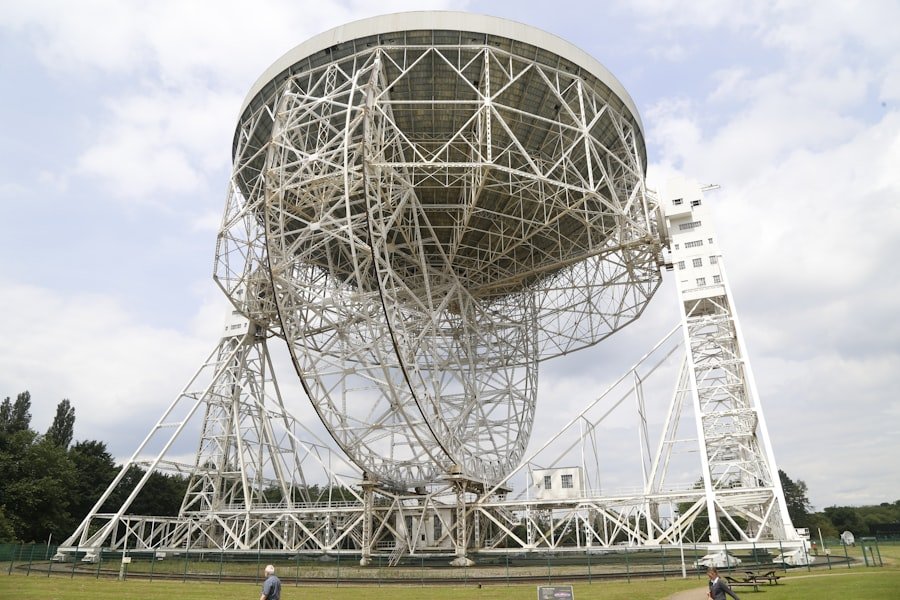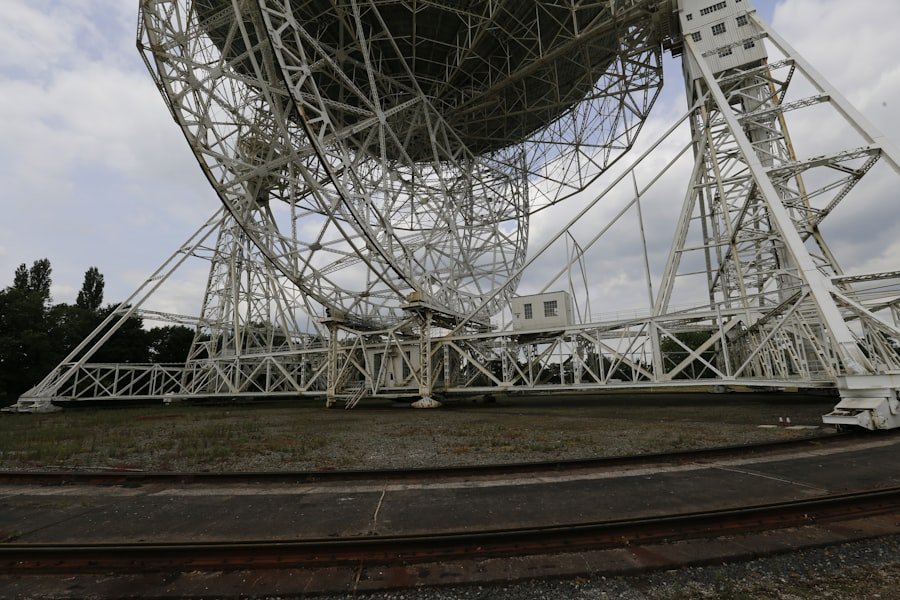Artificial Intelligence (AI) has emerged as a transformative force across various fields, and astrophysics is no exception. The vastness of the universe presents a unique set of challenges, particularly in terms of data analysis and interpretation. With the advent of advanced telescopes and space missions, the volume of data generated has increased exponentially, necessitating innovative approaches to manage and extract meaningful insights from this information.
AI technologies, particularly machine learning algorithms, have begun to play a pivotal role in addressing these challenges, enabling researchers to sift through enormous datasets with unprecedented efficiency. The integration of AI into astrophysics is not merely a trend; it represents a paradigm shift in how scientists approach the study of celestial phenomena. Traditional methods of data analysis often fall short when confronted with the sheer scale and complexity of astronomical data.
AI offers powerful tools that can identify patterns, make predictions, and even generate hypotheses based on the data at hand. This capability is particularly crucial in an era where space exploration missions are yielding vast amounts of information about distant galaxies, stars, and planetary systems. As we delve deeper into the cosmos, AI stands as a key ally in our quest to understand the fundamental workings of the universe.
Summary
- AI is revolutionizing the field of astrophysics by enabling researchers to process and analyse vast amounts of data from space telescopes more efficiently.
- Machine learning plays a crucial role in identifying exoplanets by sifting through large datasets and identifying patterns that indicate the presence of these distant worlds.
- AI is being used to better understand dark matter and dark energy, two mysterious components that make up the majority of the universe’s mass and energy.
- Neural networks are being employed to predict cosmic events such as supernovae and black hole mergers, providing valuable insights into the dynamics of the universe.
- AI is contributing to the detection and analysis of gravitational waves, opening up new possibilities for studying the most energetic events in the cosmos.
- Despite its potential, AI in astrophysics research faces challenges such as data quality and interpretability, as well as limitations in the algorithms’ ability to handle complex astrophysical phenomena.
- The future of AI in astrophysics looks promising, with the potential to further advance our understanding of the universe by tackling complex problems and uncovering new insights from the vast amount of data available.
AI’s Role in Analysing Big Data from Space Telescopes
Space telescopes such as the Hubble Space Telescope and the more recent James Webb Space Telescope have revolutionised our understanding of the universe. These instruments capture an immense amount of data, including images and spectra from distant celestial objects. However, the challenge lies in processing this data efficiently.
AI algorithms are increasingly being employed to automate the analysis of these vast datasets, allowing astronomers to focus on interpreting results rather than getting bogged down in data processing. One notable example is the use of AI in classifying galaxies. Traditional methods required astronomers to manually sort through images, a process that was not only time-consuming but also prone to human error.
By employing convolutional neural networks (CNNs), researchers have been able to train models that can accurately classify galaxies based on their shapes and features. This not only speeds up the classification process but also enhances the accuracy of the results. The ability to analyse large datasets quickly has opened new avenues for research, enabling scientists to uncover previously hidden patterns and relationships within the data.
Machine Learning and its Contribution to Identifying Exoplanets

The search for exoplanets—planets outside our solar system—has gained significant momentum in recent years, largely due to advancements in observational technology and data analysis techniques. Machine learning has become an indispensable tool in this endeavour, particularly in analysing light curves obtained from space-based observatories like Kepler and TESS (Transiting Exoplanet Survey Satellite). These light curves reveal subtle dips in brightness that indicate the presence of an orbiting planet.
Machine learning algorithms excel at identifying these minute variations in brightness that may be indicative of an exoplanet transit. By training models on known exoplanet data, researchers can develop algorithms capable of recognising similar patterns in new datasets. For instance, the use of random forests and support vector machines has proven effective in distinguishing between genuine exoplanet signals and false positives caused by stellar activity or noise.
This approach not only increases the efficiency of exoplanet detection but also enhances our understanding of planetary systems and their formation processes.
AI’s Use in Understanding Dark Matter and Dark Energy
Dark matter and dark energy are two of the most enigmatic components of our universe, constituting approximately 95% of its total mass-energy content. Despite their prevalence, they remain poorly understood due to their elusive nature. AI is beginning to play a crucial role in advancing our understanding of these phenomena by analysing large-scale cosmic surveys and simulations.
One significant application of AI in this context is in the analysis of galaxy clustering data. By employing machine learning techniques, researchers can identify patterns in how galaxies are distributed across the universe, which provides insights into the influence of dark matter on cosmic structure formation. For example, deep learning models can be trained on simulations that incorporate various dark matter scenarios, allowing scientists to compare observed galaxy distributions with theoretical predictions.
This approach not only aids in constraining dark matter properties but also helps refine our models of cosmic evolution.
The Role of Neural Networks in Predicting Cosmic Events
Neural networks have emerged as powerful tools for predicting cosmic events such as supernovae, gamma-ray bursts, and other transient phenomena. These events often occur over short timescales and can be challenging to detect using traditional observational methods. By leveraging historical data and real-time observations, neural networks can be trained to recognise precursors or signatures associated with these cosmic occurrences.
For instance, researchers have developed neural network models that analyse light curves from various sources to predict the likelihood of a supernova occurring within a certain timeframe. By training these models on extensive datasets that include both confirmed supernovae and non-supernova events, scientists can enhance their predictive capabilities significantly. This not only aids in timely observations but also contributes to our understanding of stellar evolution and the lifecycle of stars.
AI’s Contribution to Gravitational Wave Detection and Analysis

The detection of gravitational waves has opened a new frontier in astrophysics, providing a novel way to observe cosmic events such as black hole mergers and neutron star collisions. The data generated by gravitational wave detectors like LIGO (Laser Interferometer Gravitational-Wave Observatory) is complex and requires sophisticated analysis techniques to extract meaningful information. AI has become an essential component in this process.
Machine learning algorithms are employed to filter out noise from gravitational wave signals, allowing researchers to focus on genuine events. For example, convolutional neural networks have been used to classify gravitational wave signals based on their waveform characteristics. By training these models on simulated data that mimics various astrophysical scenarios, scientists can improve their ability to identify real signals amidst background noise.
This capability not only enhances detection rates but also facilitates more accurate parameter estimation for events such as black hole masses and spins.
Challenges and Limitations of AI in Astrophysics Research
Despite its numerous advantages, the application of AI in astrophysics is not without challenges. One significant limitation is the reliance on high-quality training data for machine learning models. In many cases, especially when dealing with rare astronomical events or phenomena, obtaining sufficient labelled data can be difficult.
This scarcity can lead to overfitting, where models perform well on training data but fail to generalise effectively to new datasets. Moreover, the interpretability of AI models poses another challenge for researchers. While machine learning algorithms can provide accurate predictions or classifications, understanding the underlying reasons for these outcomes can be complex.
This lack of transparency can hinder scientific discourse and limit trust in AI-driven results. As astrophysics increasingly relies on AI technologies, addressing these challenges will be crucial for ensuring robust and reliable scientific findings.
The Future of AI in Advancing Our Understanding of the Universe
Looking ahead, the potential for AI to further advance our understanding of the universe is immense. As computational power continues to grow and algorithms become more sophisticated, we can expect even greater integration of AI into astrophysical research. Future space missions will undoubtedly generate even larger datasets, necessitating advanced analytical techniques that only AI can provide.
Moreover, interdisciplinary collaboration between astrophysicists and computer scientists will likely yield innovative solutions to existing challenges. The development of explainable AI—models that provide insights into their decision-making processes—could enhance trust and facilitate broader acceptance within the scientific community. As we continue to explore the cosmos, AI will undoubtedly play a central role in unlocking its many mysteries, paving the way for groundbreaking discoveries that could reshape our understanding of existence itself.
Artificial intelligence (AI) is revolutionising various industries, including online gambling in the UK. According to a recent article on businesscasestudies.co.uk, AI is being used to enhance user experience, prevent fraud, and personalise marketing strategies in the online gambling sector. This demonstrates how AI is not only shaping our understanding of the universe but also transforming the way businesses operate in different sectors. As technology continues to advance, the possibilities for AI applications are endless, making it an exciting time for innovation and growth in various industries.
FAQs
What is AI?
AI, or artificial intelligence, refers to the simulation of human intelligence in machines that are programmed to think and learn like humans. It encompasses a range of technologies, including machine learning, natural language processing, and robotics.
How is AI used in understanding the universe?
AI is used in understanding the universe in various ways, such as analysing large datasets from telescopes and satellites, simulating complex physical processes, and identifying patterns in astronomical data. AI also helps in automating the process of identifying celestial objects and phenomena.
What are some specific examples of AI’s role in understanding the universe?
Some specific examples of AI’s role in understanding the universe include the use of machine learning algorithms to classify galaxies, identify exoplanets, and predict the behaviour of cosmic phenomena. AI also helps in processing and analysing data from space missions and telescopes.
What are the benefits of using AI in understanding the universe?
The benefits of using AI in understanding the universe include the ability to process and analyse large volumes of data more efficiently, discover new celestial objects and phenomena, and simulate complex physical processes. AI also helps in automating repetitive tasks, freeing up scientists to focus on more complex problems.
Are there any challenges or limitations to using AI in understanding the universe?
Some challenges and limitations of using AI in understanding the universe include the need for high-quality training data, the potential for biases in AI algorithms, and the complexity of simulating certain physical processes. Additionally, AI may not be able to replace human intuition and creativity in certain scientific tasks.
